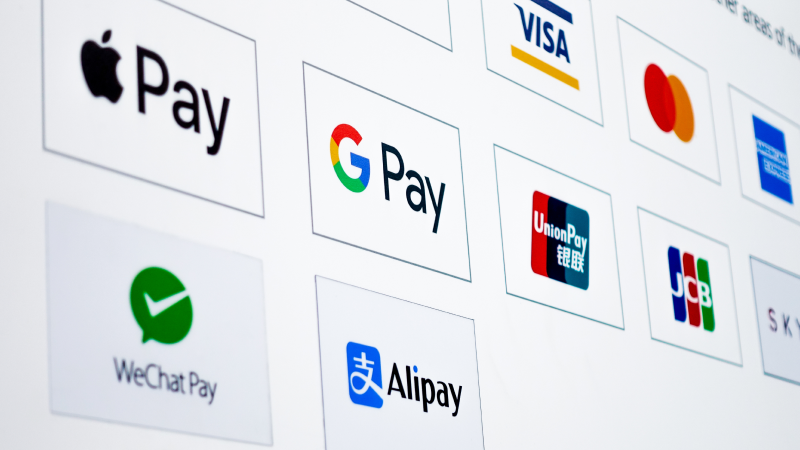Here’s the secret ingredient that makes these experiences tick: payments.
Picture yourself at a market in Marrakesh. You find the most beautiful handmade rug, but your wallet holds only USD. Luckily, you can whip out your phone and use a handy payment app to pay the vendor in their local currency. Easy!
Thanks to clever payment methods, those travel dreams can become a reality.
But what of those who can’t hop on planes? How do they experience the beautiful tapestry, the vibrant mix of language, customs, and ideas?
Well, through imports and virtual experiences made possible via reliable payments.
This article will explore how Alternative Payment Methods connect cultures and facilitate global trade.
What are Alternative Payment Methods (APMs)?
Alternative Payment Methods (APMs) are non-traditional ways to pay for goods and services. These digital or electronic methods offer convenience, speed, and security. APMs have become more common in recent years, especially for online transactions, as they provide various benefits over traditional payment systems.
APM popularity is rising rapidly as more people seek convenient and secure purchasing ways. Whether shopping online or in physical stores, consumers increasingly turn to these methods for their transactions.
Types of APMs
- Digital wallets (e-Wallets): Virtual wallets store payment information on a user’s device, allowing quick and secure electronic transactions. Examples include PayPal, Apple Pay, and Google Wallet.
- Mobile payments: These payments are made through mobile devices, usually via a mobile wallet app. They are popular in regions where traditional banking services are less accessible. Examples include M-Pesa in Kenya.
- Prepaid cards: Users load these cards with funds in advance. They can be used like debit or credit cards but do not require a bank account.
- Cash-based payments: These methods let you pay online using cash. Some merchants generate a barcode that you can take to a store to pay, while others allow payments at third-party locations like convenience stores.
APMs bridge the gap between traditional financial systems and modern needs. They offer alternatives that cater to diverse preferences and situations. Clients in emerging markets without access to conventional banking receive a secure payment option that facilitates global transactions.
Financial inclusion, cultural exchange, and more
Alternative Payment Methods (APMs) have numerous advantages that open doors for cultural exchange.
Unlike cash or credit cards, which can be limited by geography and fees, APMs often overcome these challenges.
Leaving no one behind financially
Economic growth and stability depend on ensuring everyone can participate, especially the unbanked or underbanked. Alternative Payment Methods play a big role in helping these individuals become part of the global economy.
Mobile wallets
Mobile wallets have become a popular solution in areas with limited access to traditional banking. One successful example is M-Pesa in Kenya. M-Pesa allows users to deposit, withdraw, transfer money, and pay for goods and services using mobile phones.
Many Kenyans, especially those living in rural areas where banks are scarce, can now participate in the global economy. M-Pesa enables millions to conduct business and manage their finances more efficiently.
Supporting local artisans and entrepreneurs
APMs also support local artisans and entrepreneurs, particularly informal ones. Many artisans create beautiful handmade products. However, they struggle to reach a broader market.
Reliable payments are usually among the factors limiting the growth of these local businesses. APMs enable these individuals to receive payments from international customers.
For example, an artisan in India can sell handmade jewelry to a buyer in the United States through an online platform that supports APMs. This connection helps artisans expand businesses, gain financial independence, and contribute to local economies.
Did you know?
PIX, UPI and M-PESA are among the leading alternative payment platforms in their respective regions.
Smooth, borderless transactions
One of the main advantages of APMs is that they allow for simple transactions across borders. Their simplicity is beneficial in several ways.
Reduced currency conversion fees
Traditional banking methods attract high fees for exchanging currencies or paying money overseas. APM reduces these costs.
Various digital wallets and online payment systems allow users to hold multiple currencies or exchange them at more favorable rates, which may help reduce fees.
Faster and more convenient payment options
APMs offer faster transaction times than traditional methods like bank transfers or checks. Using an APM, a person can pay global companies almost instantly, whereas a bank transfer might take several days to process.
Businesses and individuals who rely on timely payments to maintain their operations and financial stability appreciate such speeds.
Settled minds with enhanced security
Security is a significant concern for anyone making financial transactions, especially across borders. APMs have robust security features that build trust among users:
- Encryption
Many APMs employ advanced encryption to secure users’ personal and financial data. Encryption ensures that personal and financial information is securely transmitted and stored, reducing the risk of fraud and data breaches.
- Two-factor authentication
Two-factor authentication (2FA) adds an extra layer of security by requiring users to provide two forms of identification before accessing their accounts. This might include something they know (a password) and something they have (a mobile device).
2FA makes it much harder for unauthorized individuals to access accounts, thereby increasing the overall security of transactions.
How does the cultural impact practically work when using a payment gateway that supports APMs?
Cultural exchange in the digital age
Emerging markets have a rich cultural heritage that intrigues millions globally. With APMs, it’s easier to access or experience these cultures.
Booking travel and accommodation
APMs simplify booking travel and accommodation, making trips more accessible to everyone.
The ease of payment helps promote tourism and cultural exchange. People can explore new places and meet individuals from different backgrounds.
Supporting artists and musicians
Online platforms that support APMs enable artists and musicians to share their work with a global audience. Websites like Patreon and Bandcamp allow creators to receive payments from fans worldwide. Integrating payment gateways that support APS is vital for artists trying to make a living from their craft while promoting cultural exchange through their art.
Crowdfunding initiatives
Crowdfunding platforms often support APMs, making it easier for people to fund projects that promote cultural exchange. For example, a project to preserve traditional music in a remote region can receive contributions from supporters worldwide. These contributions help fund initiatives that might otherwise lack resources.
APMs are crucial for financial inclusion, transaction simplification, security enhancement, and cultural exchange. Through APMs, individuals and businesses can participate in the global economy and contribute to a more interconnected world.
Why APS simplifies payments with APMs
Today, alternative payment methods help businesses of all sizes reach a global audience. These digital tools act like bridges, connecting businesses with customers across borders and cultures.
- Alternative payment methods allow businesses to meet the preferences of local customers. This means more people can buy your products or services, no matter where they are.
- Alternative payment methods benefit local companies as well. These solutions enable local businesses to sell their products to a global market.
Offering alternative payment methods is not just about business growth. It also plays a role in expanding culture globally.
Businesses from different regions can trade efficiently, which fosters a cultural exchange that benefits everyone. People experience products and services from various parts of the world, leading to a more connected and understanding global community.
Advanced Payment Solutions (APS) offers alternative payment methods with low fees and instant transactions. We aim to support payment diversity in emerging markets like MENA and APAC. Our services provide a reliable and efficient way to handle payments without high costs and delays. Discover how our alternative payment services simplify transactions and reduce costs.
FAQs
1. What are alternative payment methods (APMs)?
Alternative payment methods (APMs) are any way to pay for something other than cash, check, or a major credit card brand like Visa or Mastercard. They are widely used in emerging and developed markets, often due to convenience, local preferences, or limited access to traditional banking.
2. What is the most popular alternative payment method?
Based on current trends, digital wallets and mobile payments are the most popular alternative payment methods. This is especially true for younger consumers who value their convenience.
3. How does APS use Alternative Payment Methods?
APS partners with local payment service providers to facilitate payments in APAC, MENA, and other emerging markets. Through APS and its partners, businesses can receive payments from these regions, often in major or local currencies, while clients pay using regionally preferred and supported payment methods.
Sources
- Top Global Payment Methods and Trends | PCMI
- E-commerce worldwide – statistics & facts | Digital & Trends Industries & Markets Companies & Products Consumers & Brands Politics & Society Countries & Regions Statista Logo
- History of money – Wikipedia
- The most popular payment methods in the US | Primer


